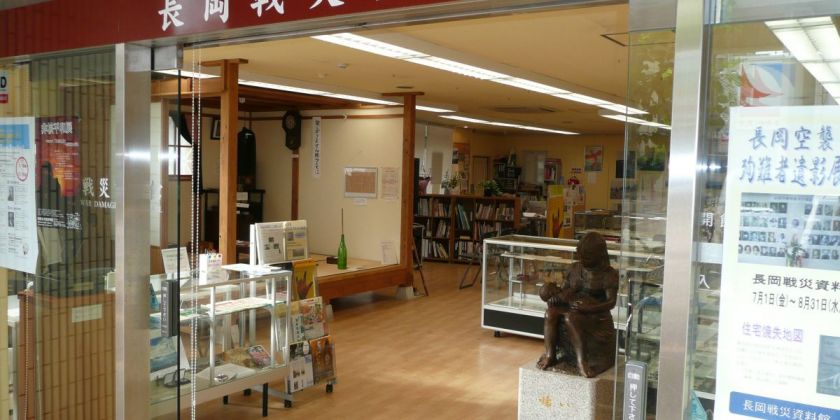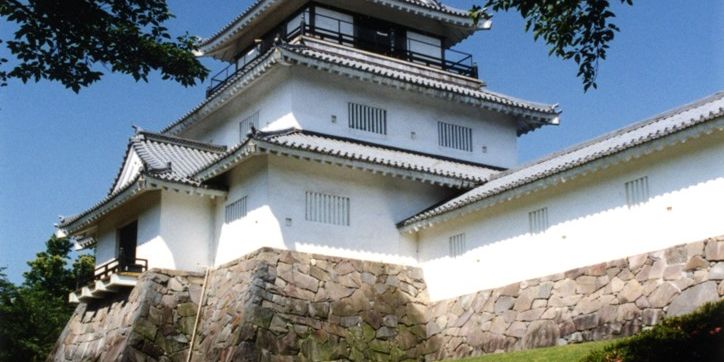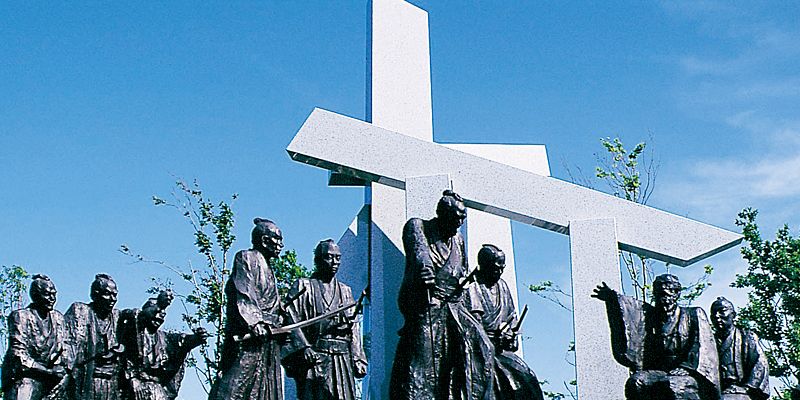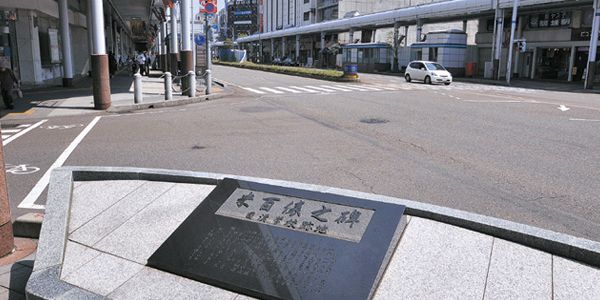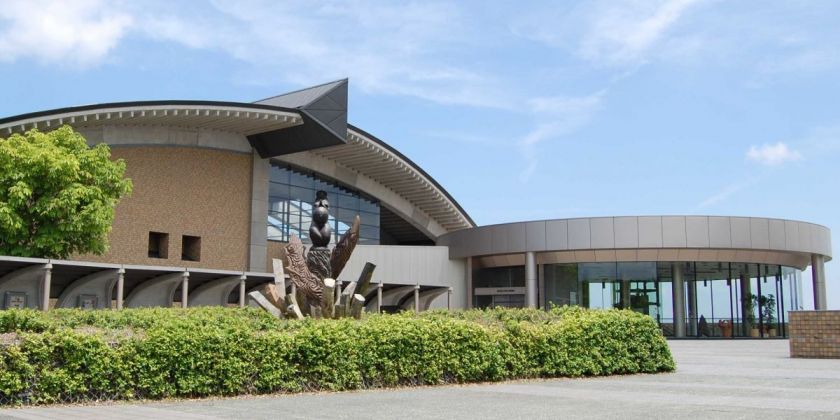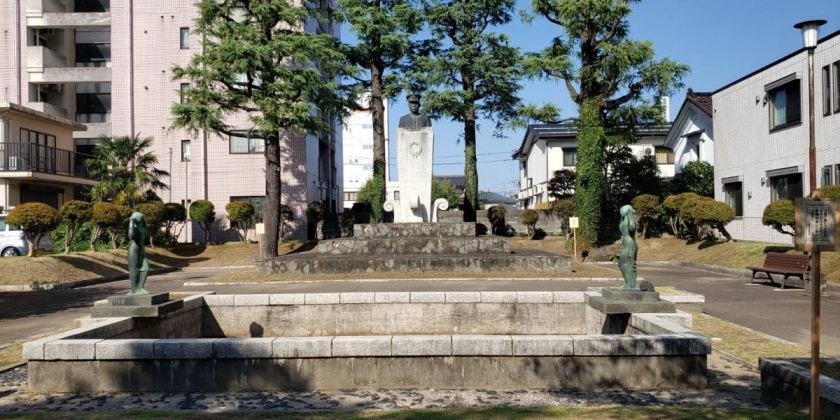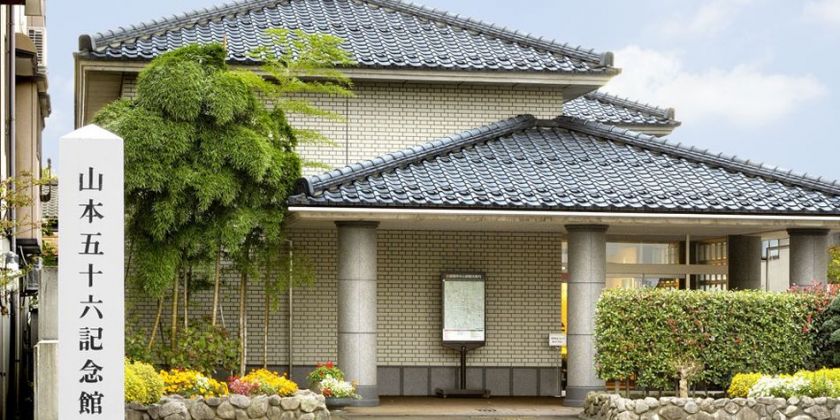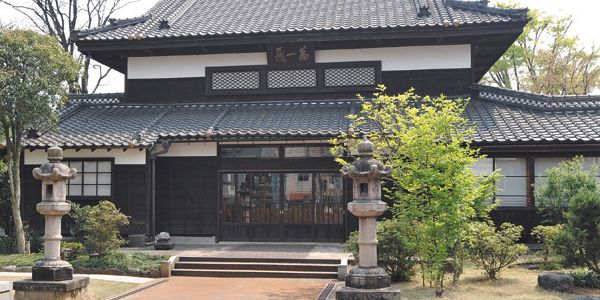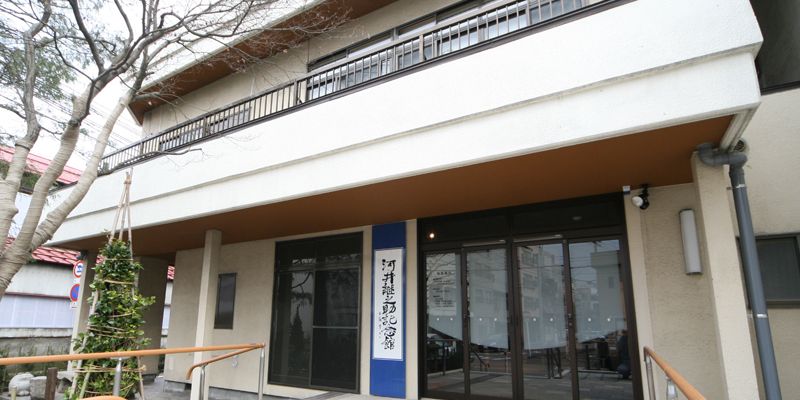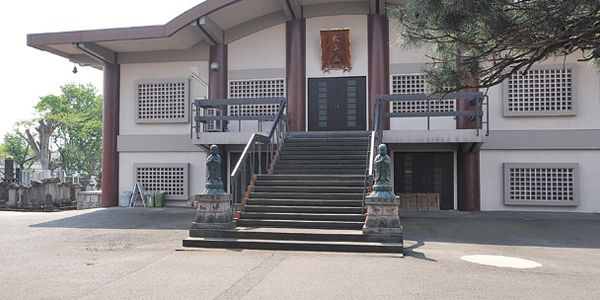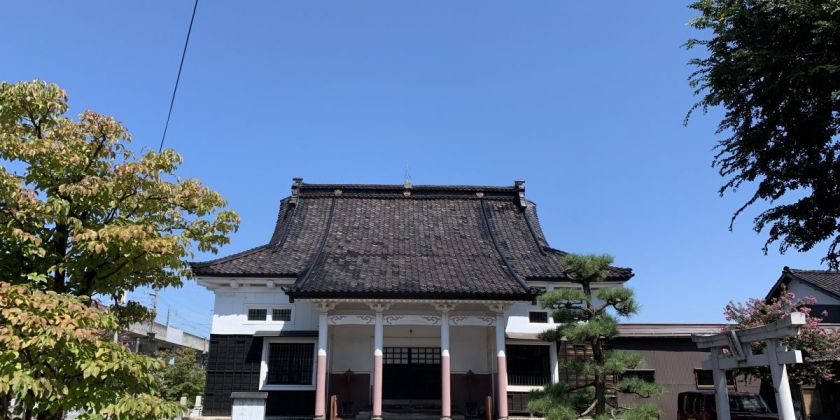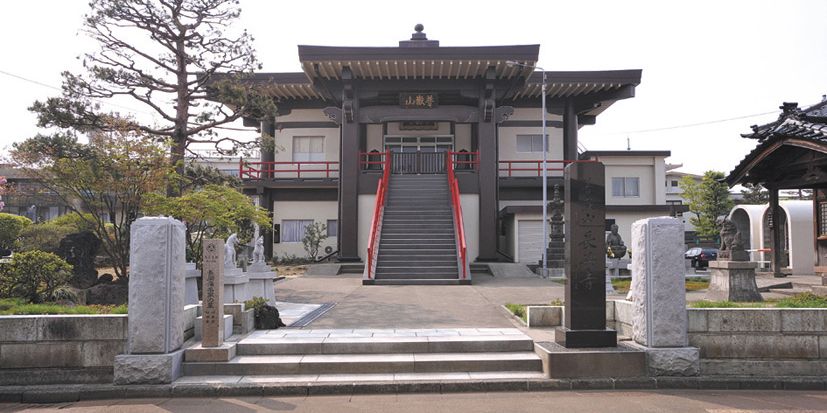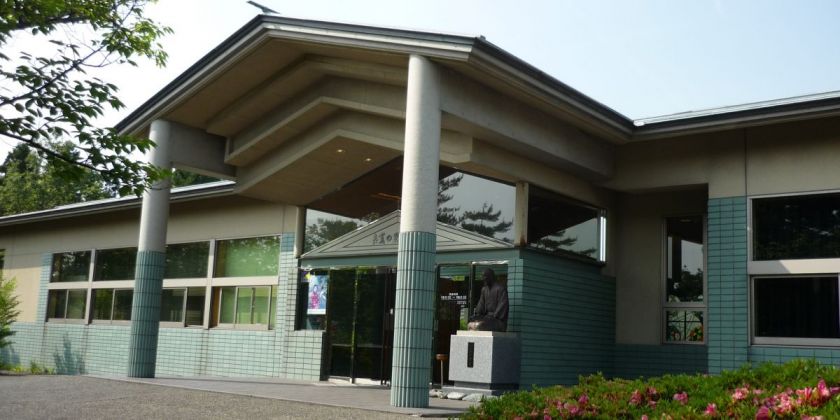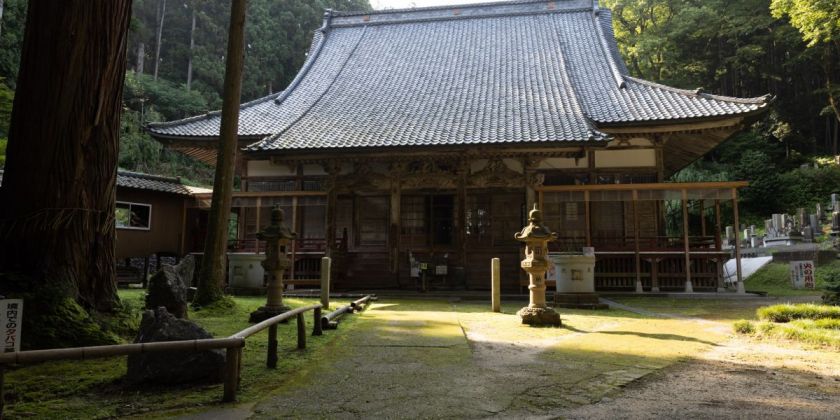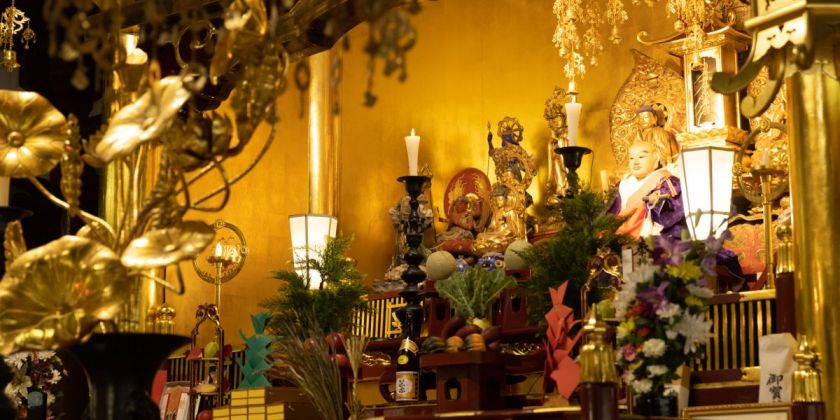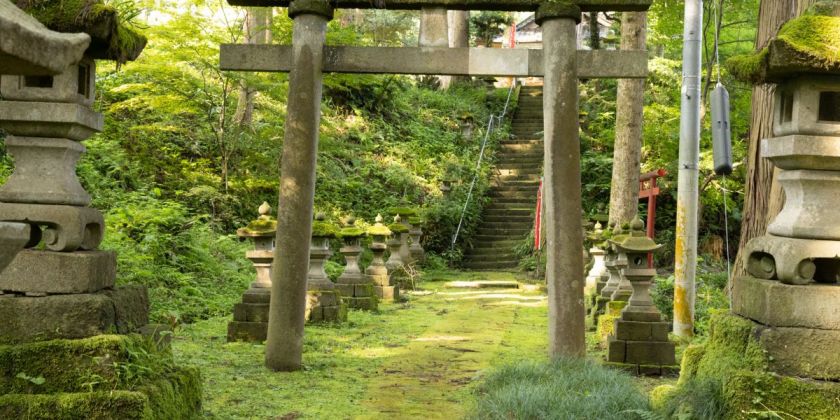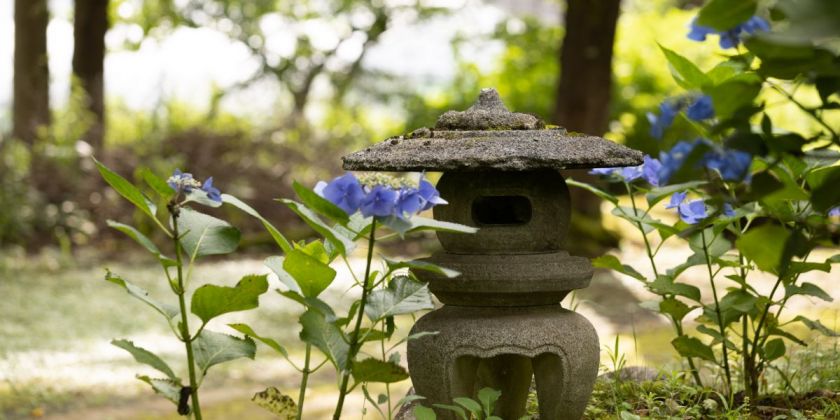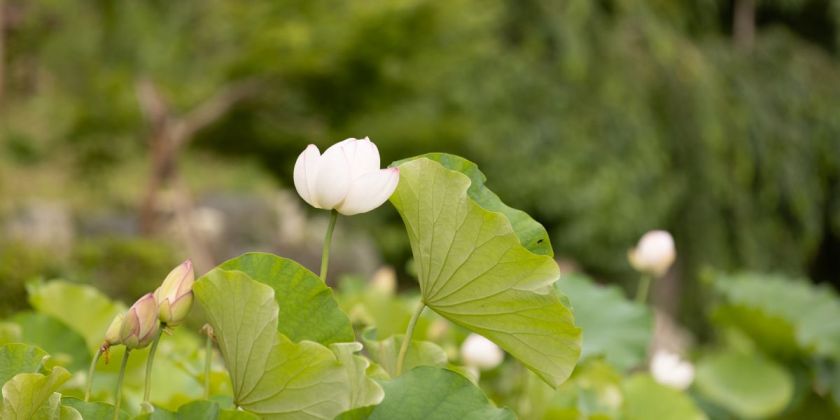
Museums & Temples
1. Nagaoka War Damage Resource Center
This facility is meant to tell live lessons correctly to generations that do not know the war, about the disastrous air raid experience as well as for fostering of peace consciousness in the next generation. It was developed as a joint effort of citizens and government.
Location : 2-6-17 Jonaicho, Nagaoka
Location : 2-6-17 Jonaicho, Nagaoka
2. Nagaoka Local Museum of History
It is a castle-shaped museum located in Yukyuzan Park.
From the observatory on the 4th floor, you can overlook the city of Nagaoka.
You can learn about the great people who were from Nagaoka and once played an active role.
Location : Oyama-machi 80-24, Nagaoka
From the observatory on the 4th floor, you can overlook the city of Nagaoka.
You can learn about the great people who were from Nagaoka and once played an active role.
Location : Oyama-machi 80-24, Nagaoka
4. KomeHyappyo Sculptured group Monument
Located in the center of the Furusato no mori in Senshugahara, It depicts one act of Yamamoto Yuzou's drama [Komehyappyo]. It is a symbol of the [Komehyappyo spirit] which citizens of Nagaoka have relayed for generations.
Location : 3 Senshu, Nagaoka (In front of Hive Nagaoka)
Location : 3 Senshu, Nagaoka (In front of Hive Nagaoka)
5. KomeHyappyoMonument
To mark 100 years after the death of Kobayashi Torasaburo, as a mark of the spirit of komehyappyo, it was decided that this monument be erected at the site of the country clan school which is the foundation of modern education in Nagaoka.
Location : 2 Ohtedori, Nagaoka
Location : 2 Ohtedori, Nagaoka
6. The Niigata Prefectural Museum of History
A museum that is unique countrywide. From snow country escape routes to Full-scale restoration diorama of Jomon era lifestyle objects are displayed. Nostalgic Showa landscape is also reproduced.
Location : 2247-2 Gongendo, 1 Sekiharamachi, Nagaoka
Location : 2247-2 Gongendo, 1 Sekiharamachi, Nagaoka
7. Yamamoto Memorial Park
A memorial park built on the compound where Yamamoto Isoroku was born, the former residence of the Takano family. Isoroku's birth house (replica) and portrait are erected in the garden.
Location : 3 Sakanouemachi, Nagaoka
Location : 3 Sakanouemachi, Nagaoka
8. Yamamoto Isoroku Memorial Museum
A memorial museum for Yamamoto Isoroku who was the commander-in-chief of the Combined fleet during the 2nd world war. Inside the museum is the left wing of the aircraft in which the Marshal was flying during his death at the Bougainville Island.
Location : 1-4-1 Gofukumachi, Nagaoka
Location : 1-4-1 Gofukumachi, Nagaoka
9. Shoufukuji Temple
This temple was used as a military hospital during the Hokuetsu Boshin war. Later, Kobayashi Torasaburo rented the main hall where he started the Kokkan school. In front of the gate, there is a monument that read [Birthplace of Nagaoka Kokkan School].
Location : 4-6-21 Shiromaru, Nagaoka
Location : 4-6-21 Shiromaru, Nagaoka
10. Tsuginosuke Kawai Memorial Museum
A resource center where one can learn about the life of Tsuginosuke Kawai who governed the Nagaoka clan at the end of the Edo period. Tsuginosuke Kawai, who was called "Last Samurai", had excellent insight.Applying the tactics of the revolutionary Napoleon, who is said to be a genius of battle, he has won many victories.At that time he acquired two of the latest weapons, the Gatling gun, which was said to have only three in Japan.Nagaoka clan had only 5,000 against 20,000 new government troops, but bravely confronted them. This is called Hokuetsu Boshin War.Tsuginosuke's trip memoirs (Chiritsubo), and many related items are on display in the museum.
Location : 1-chome, Ko 1675-1 Nagacho, Nagaoka
Location : 1-chome, Ko 1675-1 Nagacho, Nagaoka
11. Koukokuji Temple
The temple where Kobayashi Torasaburo widely known for Komehyappyo historical fact is buried. At first, Torasaburo was buried at the Ueno Yanaka cemetry. In order to have his remains closer to his birthplace Nagaoka, his family decided to relocate his burial place to their family temple koukokuji.
Location : 2-3-43 Senju, Nagaoka
Location : 2-3-43 Senju, Nagaoka
12. City Hall Plaza[Ao-re Nagaoka] Theater
Nagaoka fireworks and other attractions from various areas including actual 3D and 4K images that cannot be experienced anywhere else. To watch the great Nagaoka fireworks on a 240 inch screen is a masterpiece.
Location : 1-4-10 Ohtedori, Nagaoka
Location : 1-4-10 Ohtedori, Nagaoka
13. Eiryouji Temple
Family temple of The Makino family who owned the Nagaoka clan. Graves of Tsuginosuke Kawai who commanded the Nagaoka clan during the Hokuetsu Boshin war and MishimaOkujirou who was instrumental to the reconstruction program are at this temple.
Location : 3-5-6 Higashikanda, Nagaoka
Location : 3-5-6 Higashikanda, Nagaoka
14. Choukouji Temple
Nagaoka clan battalion commander Tatewaki Yamamoto and many Nagaoka clan samurai are buried here. Isoroku Yamamoto who joined the Yamamoto family and later became the commander-in-chief of the Combined fleet and died on the southern airspace is also buried here.
Location : 1636 Keikocho, Nagaoka
Location : 1636 Keikocho, Nagaoka
17. village of Ryokan Museum
Ryokan was delighted to throw away his status and honor and play with local children.
Meanwhile, he made books and poetry.
It is a facility that allows us to think about the way we live, from the way that Ryokan found a little happiness in poverty.
Location : 5713-2 Shimazaki, Nagaoka
Meanwhile, he made books and poetry.
It is a facility that allows us to think about the way we live, from the way that Ryokan found a little happiness in poverty.
Location : 5713-2 Shimazaki, Nagaoka
Myohoji Temple
Myohoji was the first head temple (honzan) of the Nichiren school of Buddhism built in the Shin’etsu region (present-day Niigata and Nagano Prefectures). It is located on the slope of a low mountain that used to be the site of a fourteenth-century castle in Washima, a rich agricultural area of Nagaoka. Nichiren Buddhism has multiple honzan temples across Japan, and as one of them, Myohoji is an important pilgrimage destination for the school’s followers. The temple is surrounded by nature and is popular for seasonal flower-viewing, autumn colors, and moss-covered scenery.
History
The influential monk Nichiren (1222–1282) began to preach an interpretation of Buddhism focusing on the Lotus Sutra in 1253. Over time, he gained a large following and had many disciples, who continued to spread his teachings after his death. Myohoji was founded in 1306 by order of Kazama Nobuaki (d. 1354), a lord from the Shin’etsu region who was reportedly healed from a sickness by Nissho (1221–1323), a direct disciple of Nichiren. Kazama became Nissho’s patron, and to commemorate the 25th anniversary of Nichiren’s death, he sponsored the founding of the temple that would become Myohoji. It was initially constructed in Kamakura, the seat of the shogun’s government, but after Nissho expressed regret over the lack of a high-ranking temple to spread Nichiren’s teachings in the north, Myohoji was moved to present-day Nagaoka in 1323.
Most of the temple was reduced to ashes in 1868 during the Boshin War (1868–1869), which was waged between the forces of the new government established under Emperor Meiji (1852–1912) and the supporters of the Tokugawa shogunate. Since then, Myohoji has been rebuilt on a smaller scale and now welcomes Nichiren followers and other visitors from around the country and abroad.
Temple Grounds
Myohoji is known as the “temple where the flowers bloom.” In spring, the rare yukiwariso primrose appears on the mountain slopes, and weeping cherry trees blossom near the Nitenmon Gate. Summer brings blue hydrangeas and delicate lotus flowers, and when autumn comes, tree leaves change to warm shades of red and yellow. For most of the year, the grounds are carpeted with lush green moss.
In the Hondo (Main Hall), the mandala originally created by Nichiren, which is regarded as the principal object of worship, is represented by a group of Buddhist sculptures and objects. A pagoda bearing the sacred words namu myoho renge kyo (“glory to the Lotus Sutra”) is flanked by the statues of Shakyamuni, the historical Buddha, and Taho, the Buddha of Abundant Treasures. Each Buddha is accompanied by two bodhisattvas and two guardian deities of the cardinal directions. At the front of the formation is a brightly painted statue of Nichiren. For a guided visit to the Hondo, please inquire at the temple office. Note that tours are provided in Japanese and only when volunteers or temple staff are available.
To the right of the Hondo is the small Kaisando (Founder’s Hall), where daily memorial services are held in honor of Kazama Nobuaki. Next to the Kaisando is the Senbutsudo (Hall of a Thousand Buddhas), a former sutra repository that now enshrines the spirits of the victims of the Boshin War. On the doors of the earthen building are well-preserved plaster reliefs of a dragon and a traveling monk. At the end of a stone path covered with moss is Shichimengu Shrine, which was built in 1693. According to legend, as Nichiren was traveling to his place of exile on Sado Island, he came across a village that was tormented by a malevolent spirit. Using the power of the holy sutras, Nichiren changed the spirit into a guardian called Shichimen, who took the form of a beautiful maiden and a dragon. Now, Shichimen is worshipped as a protector deity of Nichiren Buddhists.
The red Nitenmon Gate, built in 1682, the black Shikyakumon Gate, built in 1677, and Shichimengu Shrine are the only structures at Myohoji that predate the Boshin War. Both gates are designated Tangible Cultural Properties by the city of Nagaoka.
*This English-language text was created by the Japan Tourism Agency.
History
The influential monk Nichiren (1222–1282) began to preach an interpretation of Buddhism focusing on the Lotus Sutra in 1253. Over time, he gained a large following and had many disciples, who continued to spread his teachings after his death. Myohoji was founded in 1306 by order of Kazama Nobuaki (d. 1354), a lord from the Shin’etsu region who was reportedly healed from a sickness by Nissho (1221–1323), a direct disciple of Nichiren. Kazama became Nissho’s patron, and to commemorate the 25th anniversary of Nichiren’s death, he sponsored the founding of the temple that would become Myohoji. It was initially constructed in Kamakura, the seat of the shogun’s government, but after Nissho expressed regret over the lack of a high-ranking temple to spread Nichiren’s teachings in the north, Myohoji was moved to present-day Nagaoka in 1323.
Most of the temple was reduced to ashes in 1868 during the Boshin War (1868–1869), which was waged between the forces of the new government established under Emperor Meiji (1852–1912) and the supporters of the Tokugawa shogunate. Since then, Myohoji has been rebuilt on a smaller scale and now welcomes Nichiren followers and other visitors from around the country and abroad.
Temple Grounds
Myohoji is known as the “temple where the flowers bloom.” In spring, the rare yukiwariso primrose appears on the mountain slopes, and weeping cherry trees blossom near the Nitenmon Gate. Summer brings blue hydrangeas and delicate lotus flowers, and when autumn comes, tree leaves change to warm shades of red and yellow. For most of the year, the grounds are carpeted with lush green moss.
In the Hondo (Main Hall), the mandala originally created by Nichiren, which is regarded as the principal object of worship, is represented by a group of Buddhist sculptures and objects. A pagoda bearing the sacred words namu myoho renge kyo (“glory to the Lotus Sutra”) is flanked by the statues of Shakyamuni, the historical Buddha, and Taho, the Buddha of Abundant Treasures. Each Buddha is accompanied by two bodhisattvas and two guardian deities of the cardinal directions. At the front of the formation is a brightly painted statue of Nichiren. For a guided visit to the Hondo, please inquire at the temple office. Note that tours are provided in Japanese and only when volunteers or temple staff are available.
To the right of the Hondo is the small Kaisando (Founder’s Hall), where daily memorial services are held in honor of Kazama Nobuaki. Next to the Kaisando is the Senbutsudo (Hall of a Thousand Buddhas), a former sutra repository that now enshrines the spirits of the victims of the Boshin War. On the doors of the earthen building are well-preserved plaster reliefs of a dragon and a traveling monk. At the end of a stone path covered with moss is Shichimengu Shrine, which was built in 1693. According to legend, as Nichiren was traveling to his place of exile on Sado Island, he came across a village that was tormented by a malevolent spirit. Using the power of the holy sutras, Nichiren changed the spirit into a guardian called Shichimen, who took the form of a beautiful maiden and a dragon. Now, Shichimen is worshipped as a protector deity of Nichiren Buddhists.
The red Nitenmon Gate, built in 1682, the black Shikyakumon Gate, built in 1677, and Shichimengu Shrine are the only structures at Myohoji that predate the Boshin War. Both gates are designated Tangible Cultural Properties by the city of Nagaoka.
*This English-language text was created by the Japan Tourism Agency.

